
Tuesday 01 March 2016
Spring Has Sprung?
Spring has sprung or has it? I know proper spring doesn’t start for a few weeks yet but Tuesday has got March off to a bit of a milder day than we’ve had recently. We’ve had a little rain, not much, only enough to wet everywhere and there’s been a bit of a breeze.
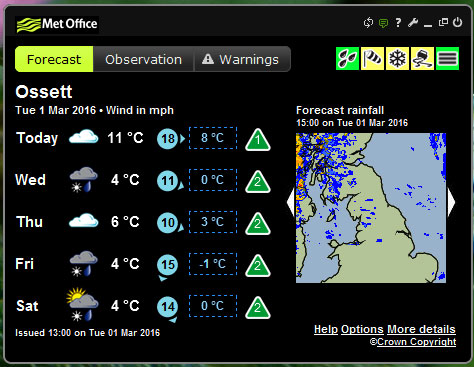
The forecast isn’t very inspiring though. The possibility of snow showers and below freezing temperatures at night is not what I want to see in a spring forecast. After a mild winter it’s turned colder as a gardener’s thoughts turn to seed sowing.
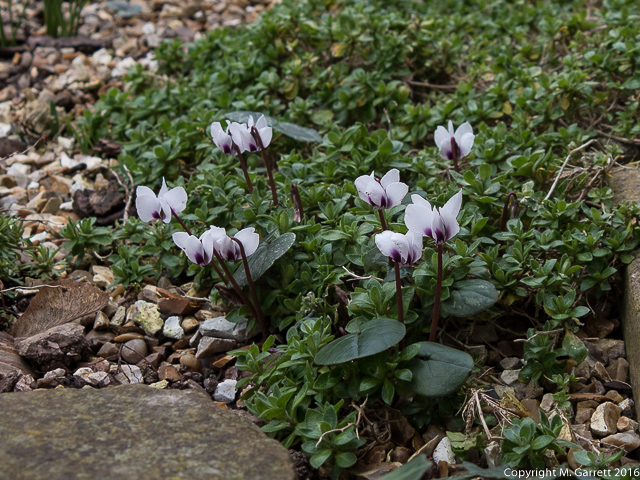
The forecasts have been wrong before so I’m hoping they’ll be wrong again!
Wednesday & Thursday 02/03 March 2016
Turns Out They Were Right
The cool start March has continued with both Wednesday and Thursday turning out cold and windy. We’ve missed out on any further frosts but only just. The last week of February was dry and I was beginning to think that the allotment would at least be drying out a little bit ready for a bit of digging. We’ve had some rain on each of the first three days of March so I’ve put that thought to the back of my mind.
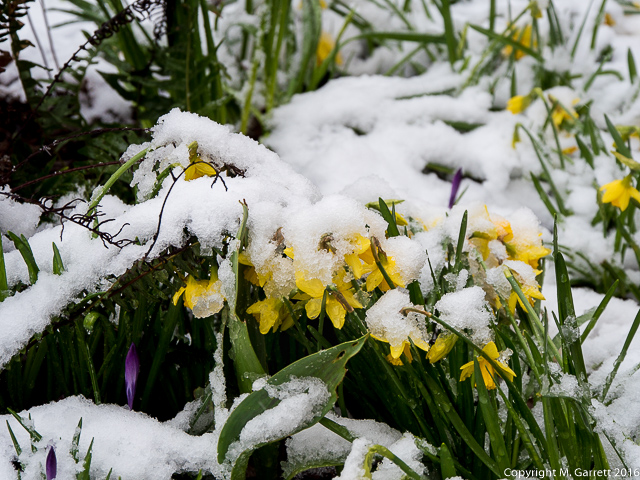
Friday morning has brought some more wet snow and more snow and rain is forecast throughout the day. I’m guessing the allotment won’t be drying out all that well!
Friday 04 March 2016
Snow, Rain and a Sparrowhawk
We had a bit of a covering of snow on Friday morning and it kept on falling until the middle of the morning when it turned to rain. Then the rain carried on for the remainder of the day.

It was probably just as well it fell as rain as by the end of the day we’d had 27.6mm (1.09”) moving it into sixth place in my wettest days since 2009 chart.
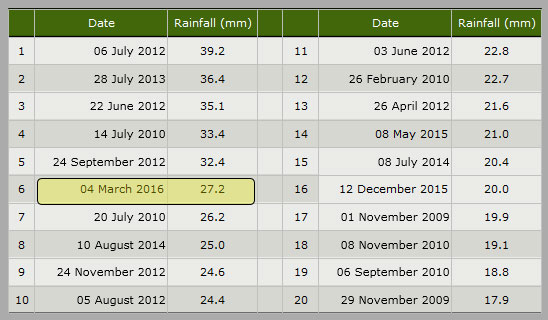
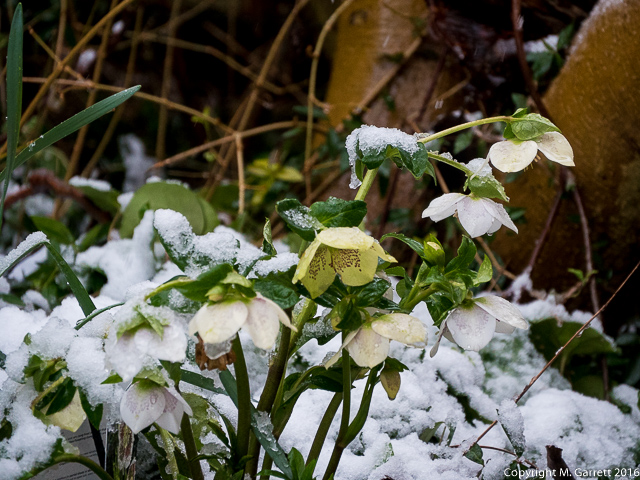
The rain washed any remnants of the slushy snow by late afternoon. In the first four days of March we’ve had a total of 40.0mm (1.57”) of rain which is almost as much as we’d expect in the whole of the month. It’s not going to do much to help our allotment dry out ready for spring planting. Here’s hoping the rest of the month will be drier.
We did spot a male sparrowhawk in the garden. It was obviously looking for a meal from amongst the smaller birds on the feeders in our magnolia tree. As far as I could tell it didn’t have any luck.
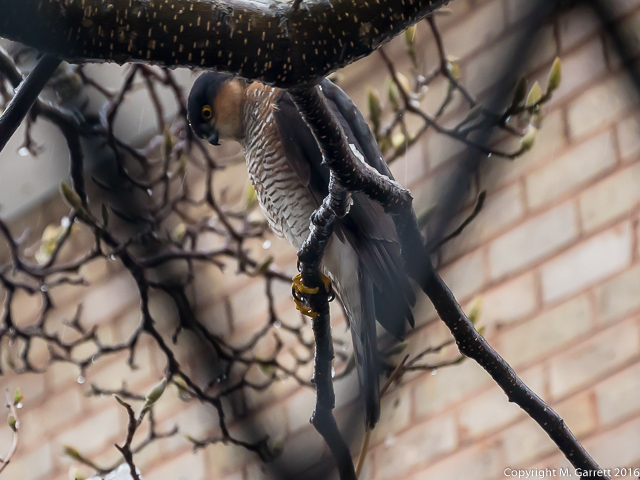
It perched in the tree for a few moments with its head hidden behind a branch making getting a decent photo a bit tricky. It didn’t help that I was messing about with my camera trying to set it up to do slow motion video as the sparrowhawk flew in. It did have one quick look down to see what I was doing before it was on its way again looking for lunch.
Saturday 05 March 2016
Was It the Warmest Winter on Record?
I’m guessing it depends on where you live and exactly which records you use as a comparison. If you’ve read any of my blog posts you will know that I like to use the Met Office Central England Temperature Records for comparison purposes.
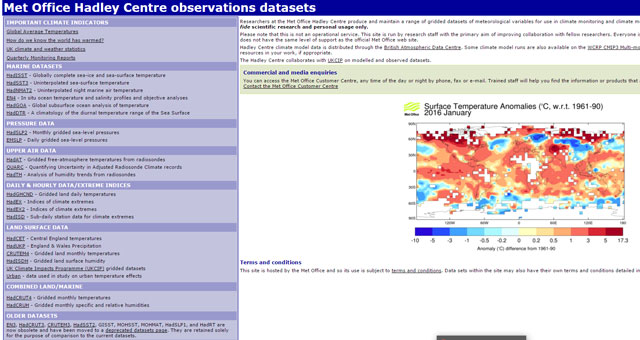
URL: http://www.metoffice.gov.uk/hadobs/index.html
The Met Office description of this record is given below:
Hadley Centre Central England Temperature (HadCET) dataset
The CET dataset is the longest instrumental record of temperature in the world. The mean, minimum and maximum datasets are updated monthly, with data for a month usually available by the 3rd of the next month. A provisional CET value for the current month is calculated on a daily basis. The mean daily data series begins in 1772 and the mean monthly data in 1659. Mean maximum and minimum daily and monthly data are also available, beginning in 1878.
Brief description of the data
These daily and monthly temperatures are representative of a roughly triangular area of the United Kingdom enclosed by Lancashire, London and Bristol. The monthly series, which begins in 1659, is the longest available instrumental record of temperature in the world. The daily mean-temperature series begins in 1772. Manley (1953, 1974) compiled most of the monthly series, covering 1659 to 1973. These data were updated to 1991 by Parker et al (1992), who also calculated the daily series. Both series are now kept up to date by the Climate Data Monitoring section of the Hadley Centre, Met Office. Since 1974 the data have been adjusted to allow for urban warming: currently a correction of -0.2 °C is applied to mean temperatures.
So I thought I’d look to see where last winter comprising December, January and February come in this temperature series. I’ve placed the coldest winters and mildest winters in the table below.
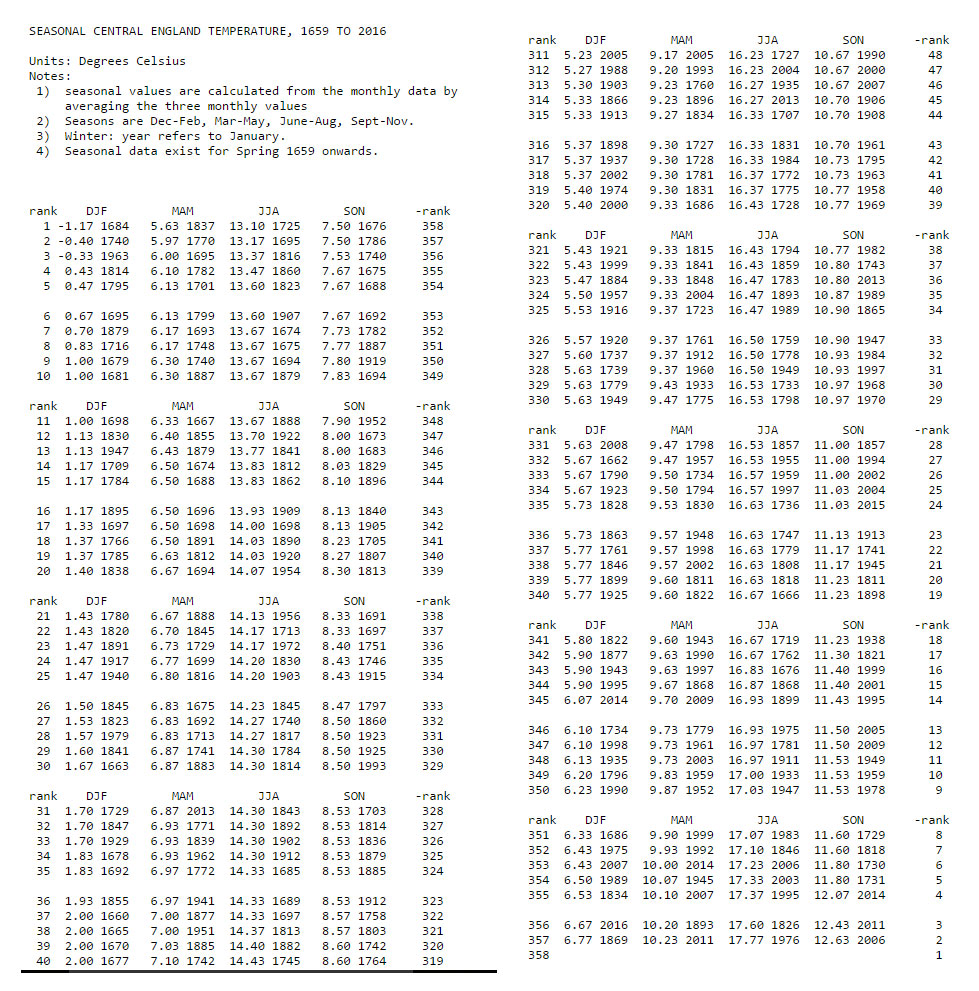
http://www.metoffice.gov.uk/hadobs/hadcet/ssn_HadCET_mean_sort.txt
This covers the last 357 years with the coldest winters in the left hand column and mildest winters in the right hand column. Looking at the bottom of the right hand column this shows that the winter of 1869 was milder than 2016 pushing last winter into second place. Working out the same average for last winter using Ossett temperatures gives an average of 6.7°C.
So it was close but it wasn’t the mildest winter “ever” based on this record.
